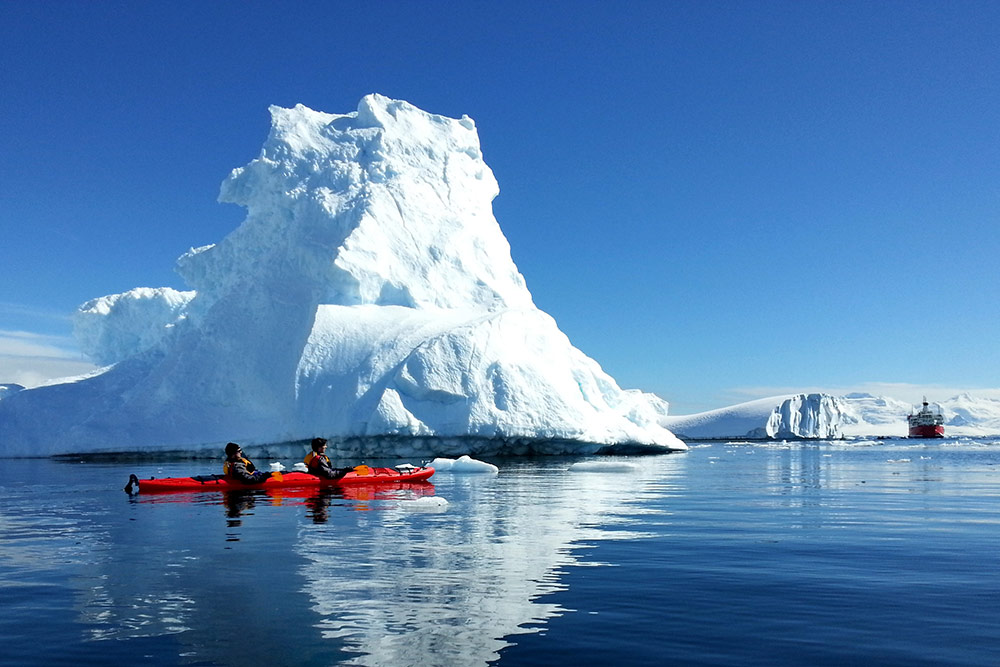The Arctic by Land and Sea: Insider’s Guide
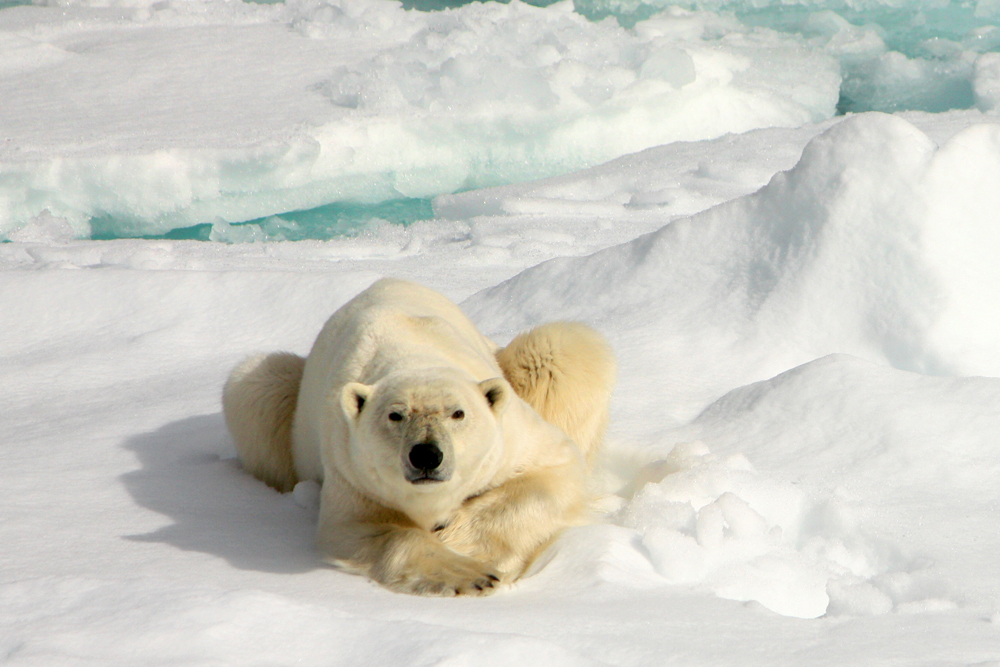 Polar bear, Sea Ice Svalbard, Arctic. Photo by Shelley Fry.
Polar bear, Sea Ice Svalbard, Arctic. Photo by Shelley Fry.
The insider advice on this page is from one of Wendy’s Trusted Travel Experts for the Arctic and expedition cruises: Ashton Palmer of ExpeditionTrips.
Infectiously enthusiastic about small-ship cruising, Ashton spent nearly a decade as an expedition leader, guide, naturalist, Zodiac driver, avid bird-watcher, and photographer in the Arctic, Antarctica, the Amazon, and the South Pacific. (He has traveled to Antarctica more than 50 times and spent a collective three months in the Arctic.) In 1999, Ashton started a company to match travelers with the right small-ship expedition trips everywhere from the Galapagos to Papua New Guinea and the two poles. He’ll be the first to tell you when a two-week trip to the Arctic may not be your cup of tea, and when a specific ship or cabin just isn’t worth the extra expense. And because of his relationships with the top cruise lines and tour operators, Ashton often secures preferred rates or other perks (such as shipboard credits or a bottle of wine).
Ships & Lodges
Best bang-for-your-buck ships
Quark’s Ocean Adventurer (128 passengers) and World Explorer (178 passengers) are classic expedition ships that offer consistently great trips. Ashton has worked with these ships for 20 years because they provide adventurous itineraries at a really good price point. (You want to snowshoe? Check. Want to sea kayak? Check.) To max out the bang for the buck, take advantage of early-booking discounts; if you are traveling solo, you can choose to share a cabin with another cruiser and avoid paying a single supplement.
Ships worth the splurge
Seabourn’s sister ships Venture and Pursuit are brand-new, having just launched in 2022 and 2023 respectively. These beauties are ultra-luxury ships with an adventure focus; each carries 268 passengers and every single cabin has a veranda. There are multiple excellent dining options, two submarines, ample Zodiacs and kayaks, and a 26-person expedition staff.
Sail to the geographic North Pole aboard Le Commandant Charcot (245 passengers), launched in 2021 as the first Polar Class 2 icebreaker and first hybrid-electric polar exploration ship powered by liquified natural gas. This being a Ponant ship, you’ll also find French luxury and gastronomy onboard. Choose the 16-day itinerary roundtrip from Longyearbyen, Spitsbergen, or add two days to swing through Nordvest-Spitsbergen National Park.
Best expedition ships
Lindblad’s National Geographic Resolution and National Geographic Endurance each carry 128 passengers and feature thoughtful Scandinavian design to ensure your attention goes past the windows to the scenery.
A great mid-range option is Quark’s Ultramarine, a beautiful 199-passenger ship. On sailings to either Svalbard or Greenland, the ship’s two helicopters offer farther-ranging activities such as flightseeing, heli-hiking, heli-camping, mountain-biking, alpine heli-trekking, and alpine kayaking—all included in the trip cost.
Best ships for foodies
For those who want to eat really, really well, the Scenic Eclipse and soon-to-be-launched Scenic Eclipse II (both carrying 228 passengers) offer ten culinary styles, including an upscale French restaurant and Champagne bar, Asian fusion, sushi, a night-market bar, a casual yacht club, a chef’s tasting table, private dining, and even culinary master-classes. (And they are all-inclusive.)
Also notable for gastronomy is Le Commandant Charcot, the only ship that has a restaurant from Michelin-starred chef Alain Ducasse; count on plenty of caviar—and if you like Champagne, their house pour is Veuve Clicquot.
Best ships for solo travelers
Sister ships Le Boreal, L’Astral, Le Lyrial, and Le Soleil frequently waive solo supplements because they limit capacity to 200 in polar regions but can carry more passengers.
The Ultramarine has possibly the nicest solo cabins available.
Best cruise for families
While the Arctic tends to appeal more to adults than to children, the Land of the Ice Bears trip aboard the National Geographic Explorer (148 passengers) caters specifically to multigenerational families. It’s technically an 11-day itinerary, but that includes travel time, so the sea voyage itself is just eight days—which is a good length for younger travelers. On these sailings, menus include more kid-friendly items and meal times can be a little more flexible. Plus, staff regularly organize activities like pizza-and-movie nights and other activities geared specifically to naturalists-in-training.
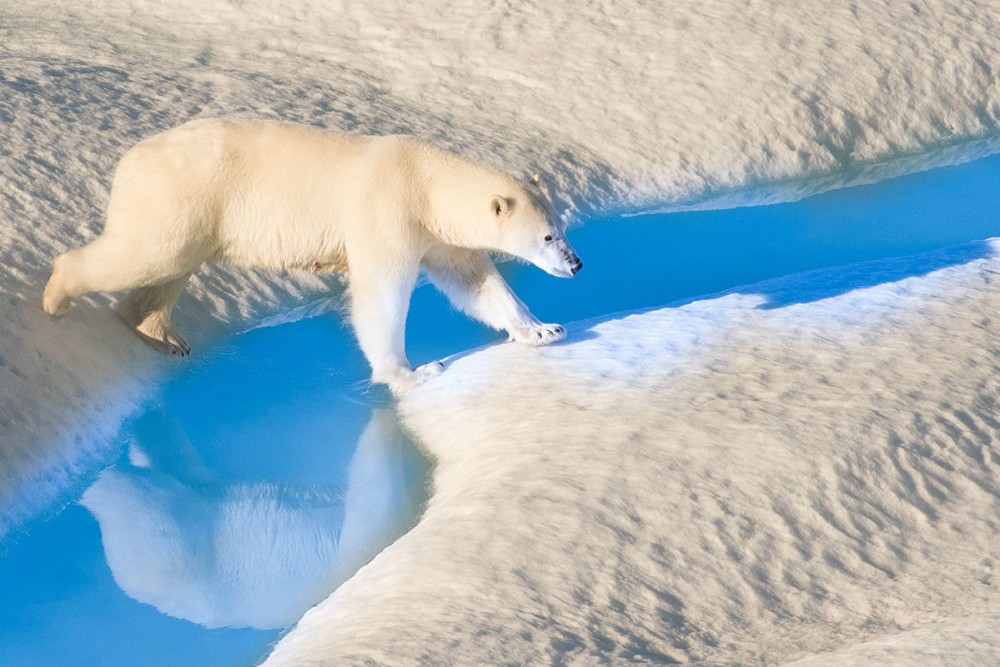
A polar bear crosses blue water in the Arctic. Photo: ExpeditionTrips
Best lodge to see polar bears
In the seven-day Churchill – Tundra Lodge Polar Bear Adventure, guests stay in a 32-room rolling hotel that was purpose-built to position itself as close as possible to the highest concentration of bears. The lodge has rows of raised windows and fenced observation decks so that guests can spend hours watching the polar bears from the comfort of their safe and cozy accommodation—when they’re not out exploring in the polar rovers, that is. The best time to go is mid- to late October. And if you’re lucky, that’s also a good time of year—and a good spot—to catch sight of the northern lights.
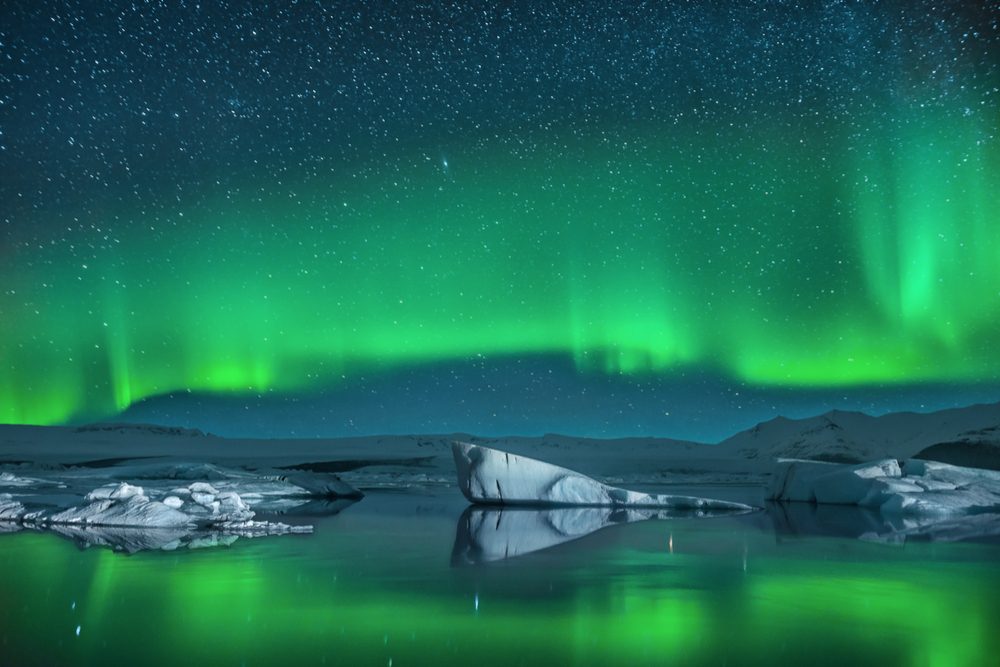
Search for the northern lights on an Arctic cruise. Photo: Shutterstock
Best lodge for whale-watching
Beluga whales, the beautiful all-white species known for their high-pitched twitter, congregate by the hundreds in the shallow coastal waters of the Arctic Ocean, and specifically concentrate around Somerset Island, in the Canadian Arctic archipelago, between early July and mid-August.
The Arctic Watch Wilderness Lodge, on Somerset Island, has a 10-day package in the summer months where you can spend your time sea kayaking, hiking to waterfalls, fishing, visiting local archeological sites, and taking ATV rides—but just as fun is simply hanging out at the lodge and watching the pods of belugas that frolic only a few miles offshore.
Where to Go
Best short trip
Offered only from mid-October to mid-November, the compact Churchill Classic Polar Bear Expedition is a fantastic way to experience the Arctic and see polar bears up close in just six days. Churchill, on the shores of the Hudson Bay in the Canadian Arctic, is more easily accessible than other Arctic destinations, so you’ll save in travel time. Plus, the “polar rover” vehicles used for this expedition are designed specifically for traversing the tundra and for safely observing polar bears up close. Every seat is a window seat and the floor of the viewing platform is steel mesh, so passengers can be inches from curious bears who often sniff around right beneath the rover.
Best cruise to see ice
The 20-day Best of the Western Arctic: Canada and Greenland trip aboard the Ultramarine, which explores the Canadian Arctic and Greenland high above the Arctic Circle. The highlight of the trip is the Ilulissat Icefjord (known as the birthplace of icebergs, since the fjord produces nearly 20 million tons of ice each day), a UNESCO World Heritage Site where you sail through a wonderland of icebergs in every shape, size, and shade of blue. Its Jakobshavn Glacier is among the most active and fastest-moving tidewater glaciers in the world, often calving sheets of ice that are more than 2,500-feet—that’s half a mile—high.
Best cruise for history buffs
The 25-day Northwest Passage: From Greenland to the Bering Sea trip aboard L’Austral (264 passengers). The Northwest Passage sea route through the Canadian Arctic archipelago has a rich history of exploration from the late 15th through the early 20th centuries. Travelers on these itineraries are among the few people to follow in the footsteps of early European explorers and visit sites such as Beechey Island (where Sir John Franklin and his men disappeared in the mid-1800s, and whose ship remains were just recently uncovered) as well as Inuit communities throughout the region. Trips that follow this route also typically place more emphasis on the historical aspects of the region and ensure that they are accompanied by well-versed historians who help to bring the destinations alive through compelling storytelling and interpretation.
Places most worth the trek
Baffin Island and Ellesmere Island, in the Canadian territory of Nunavut, offer amazing scenery, terrific opportunities to see polar bears and other wildlife like walrus and musk oxen, plus rich indigenous Inuit culture and art. Ashton also loves the Canadian Maritimes for music, scenery, and history—and from there, some itineraries sail over to Greenland for a cultural double whammy.
Best Time to Go
Summer to early fall brings the best weather. The early summer months in the Arctic have the advantage of the midnight sun, when the near 24-hour daylight conditions make for superb photo opportunities.
Best Time to See Polar Bears
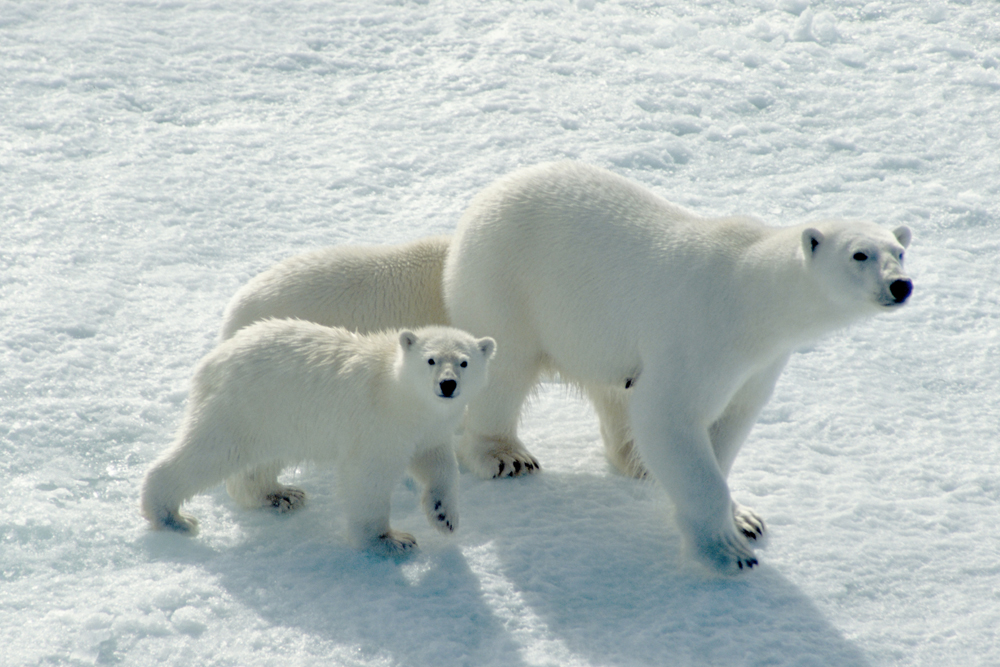
Mid to late June is prime time in Norway’s Svalbard Archipelago, widely considered the best place to see bears in the wild since it’s home to about 3,000 of them. Considered “mid-season,” the latter half of June is when the ice and weather conditions tend to be optimal, balancing the most comfortable daytime temps (in the 30s) with enough remaining ice so that the bears can still be found near the shore hunting for food. By July, the ice starts to melt, forcing the bears further inland (where they’re harder to see) to search for food. Later in the summer, however, is the best time to see whales around Svalbard.
Worst Time to Go
Winter and early spring, when there is still a lot of sea ice—which makes it hard to explore the region and find the bears.
Biggest Rookie Mistake
Packing too many destinations into one trip. The Arctic is such a vast expanse that you are better off seeing one area in depth, rather than trying to string together multiple destinations. Because most ships in the region work from pole to pole (South to North), some shipping companies offer multiple destinations when they need to reposition the ship to another region; these trips do not necessarily offer the best itineraries. When deciding which trip to choose, narrow down your priorities (wildlife, ice, birds, history, culture) and then select the trip that highlights those elements.
Bragging Rights
A trip to the North Pole aboard a Russian nuclear ice breaker. It takes about six days to sail to the top of the world, where all lines of longitude converge. While you’ll likely see a few polar bears and whales along the way, the real thrill of this journey isn’t in spotting wildlife—it’s in traveling to one of the most remote places imaginable. You’ll be slicing through nine-foot blocks of ice, making aerial excursions by helicopter, and—for those brave enough to swim in the Arctic—taking a polar plunge in polar bear country!
Best Shore Excursion
Dog-sledding across the tundra in Churchill. This is not your horse-and-carriage ride around Central Park. It’s hard to believe how fast they go—it can feel like you’re flying close to the ground through a magical winter wonderland of sparkling snow (hang on tight!).
When to Book Your Trip
June through August of the previous year, when itineraries are released for the following season. Availability is prime then, and you might be able to snag an early-booking discount.



